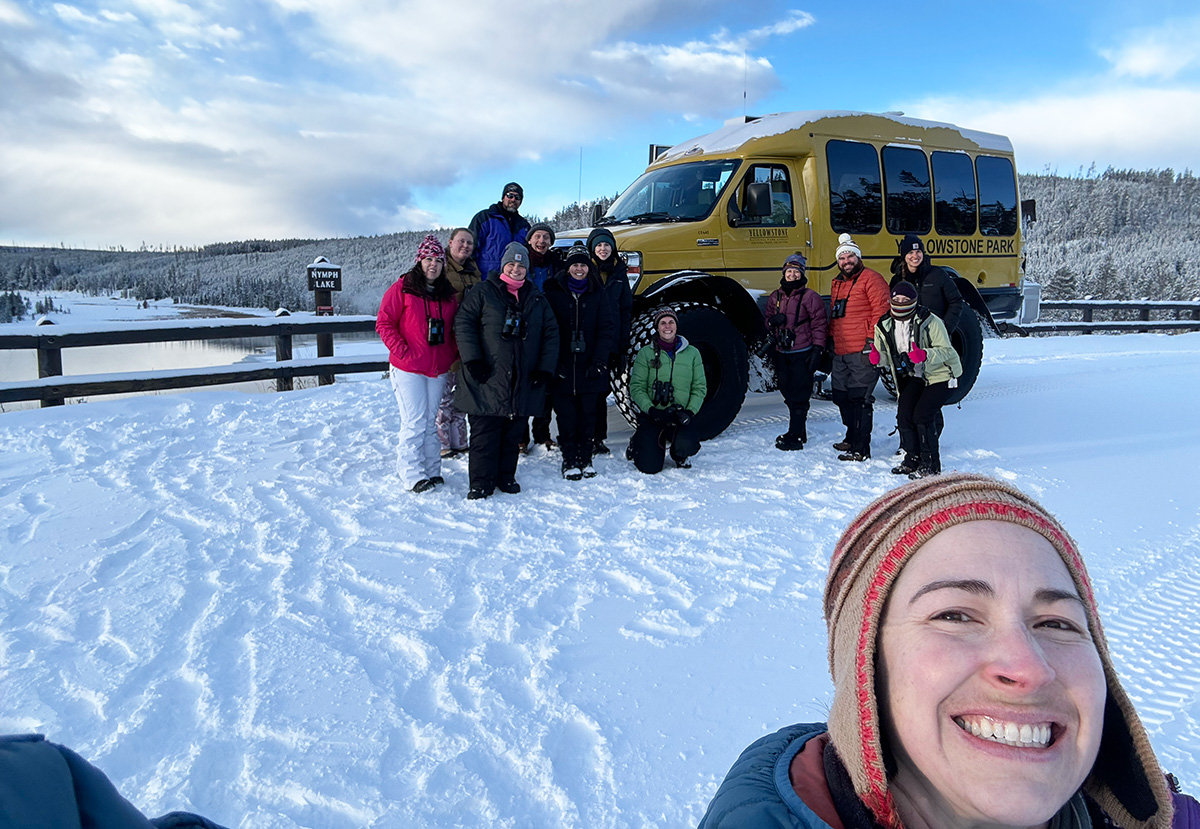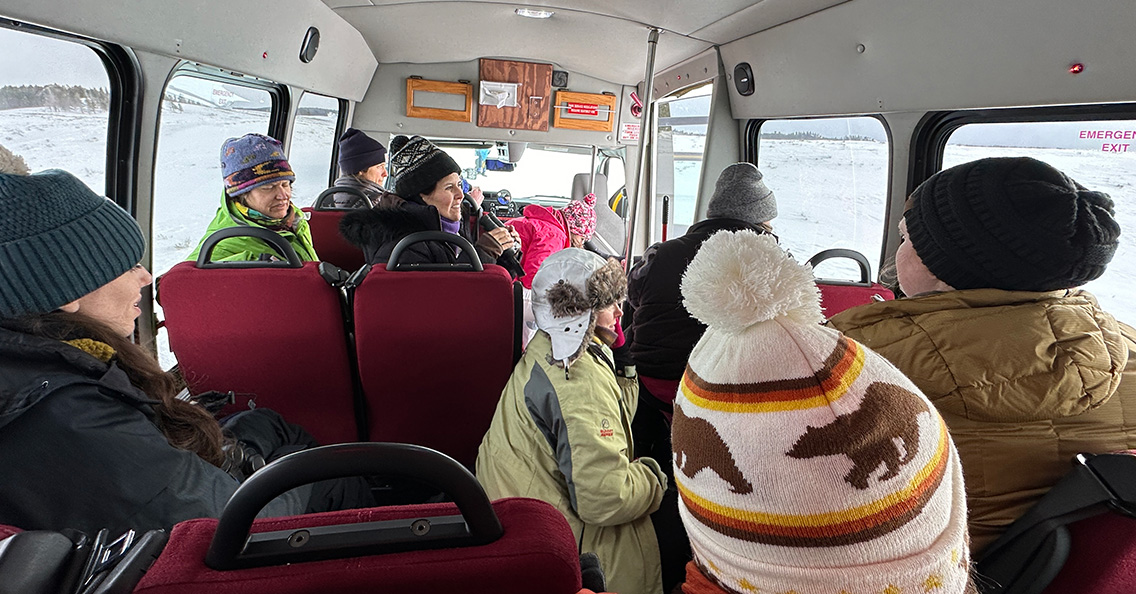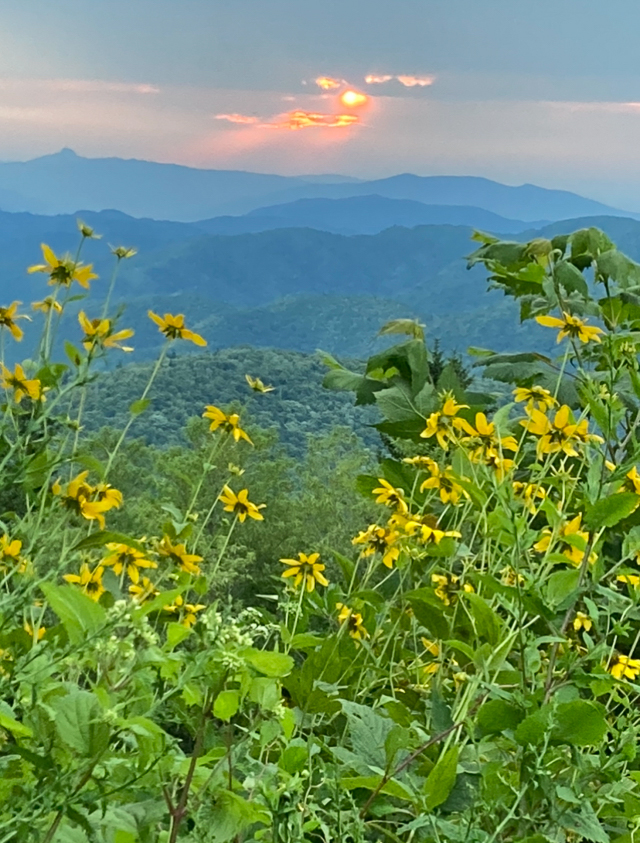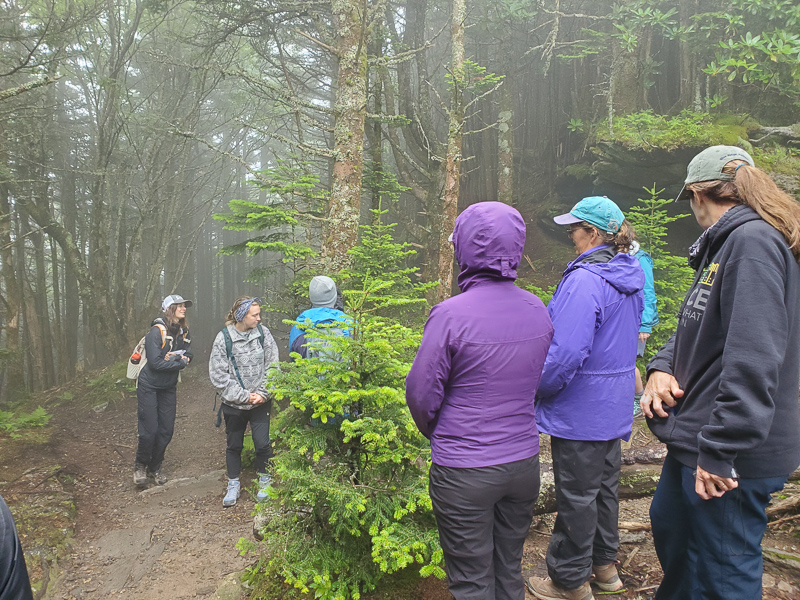“Last leg of the journey…”
July 21, 2024 - Comments Off on Last leg of the journey…
After an eventful night (thanks for your MacGyver skills Rich!), we arrived back at Pisgah Campground to assess storm damage. Overall, everyone weathered the heavy rains, though one of our pop-up tents collapsed under the weight of the water that got caught in its canopy. We quickly dispersed and settled in for the night. Our neighbors at the campground annoyed us with their loud late night festivities that kept us awake, but this forced us to build our patience, which we know is a valuable skill to have in the classroom. Abby had these folks around her campsite on several sides but was somehow skill perky in the morning. Way to go Abby for exemplary positivity!!
Our morning started with individual campsite breakdown and then group breakfast buffet. Rain was on pause, and we enjoyed warm sustenance and coffee/tea to kickstart Day 6 of our adventure. We piled into the stinky vans thanks to wet river clothes and smelly shoes… a small price to pay to see hellbenders! We traveled down the Parkway towards our final destination of Cherokee. As we curved around the mountain, views of blue misty sky islands rose and fell to our left giving us a surreal vision in hues of blue and yellow.

With our souls refreshed, we scoured the shoulders of the Parkway for turks-cap lilies to practice plant part identification. We got more than we bargained for: we met up with a group of folks from the Tennessee Native Plant Society who were engaging in plant discovery. What an impromptu and engaging team we became, sharing our knowledge and experiences with mountain flora. We explored vase-vine leatherflower, tall bellflower, hedge nettle, starry campion, smilax, Solomon’s seal, and bergamot.

Conversations passed the time as we continued toward Cherokee. We made a brief stop at the welcome center for the Great Smoky Mountains National Park and discovered that the US Poet Laureate, Ada Limon was on site to discuss her book, “You Are Here: Poetry in the Natural World”. Unfortunately, long lines and limited time prevented us from meeting her. As we drove past meadows near the Visitor Center, we glimpsed an elk in a field, quietly grazing amidst the human presence that encroached upon their once natural habitat.
We spent the afternoon in Cherokee, NC which gets its name from the Eastern Band of Cherokee Indians, our only federally recognized tribe in North Carolina. We were honored to meet with two members of the tribe who shared their history and culture, including a deeply moving and inspirational story about the Trail of Tears. We learned from Marvel Welch, who in 2013 was selected to represent the tribe on the “Remember the Removal” bicycle ride that follows the 950 plus mile path taken by indigenous people as they were forcefully relocated along what became known as the Trail of Tears. Marvel also coached us through making our own corn bead necklaces which symbolized the tears shed by the Cherokee along the arduous journey. We also were amazed to hear from Watson Harlan, Curator from Qualla Arts and Crafts Mutual Co-Op as he explained some of the historical context for important artistic traditions and skills of the Cherokee.
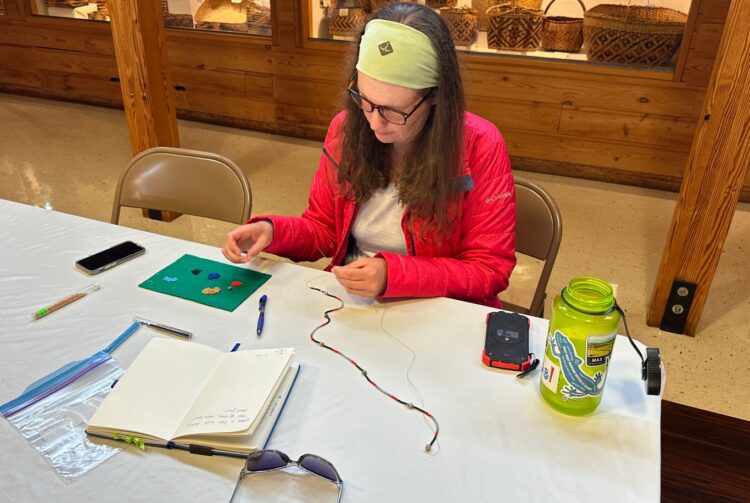
Next, we stopped at the Oconaluftee Indian Village, which is a living history museum showing aspects of Cherokee life in the past. We were introduced to the traditional Cherokee arts such as basket weaving, wood carving, finger weaving, pottery, weapon-making, and cooking. In the village we saw contemporary Cherokee people demonstrating their traditions in an 18th century setting. A theatrical performance called “Time of War” gave us a drastically different perception of the “white person: Native American” dynamics which took place back in the day. It revealed a story different from what popular media and (movies like “Pocahontas”) would lead us to believe happened.
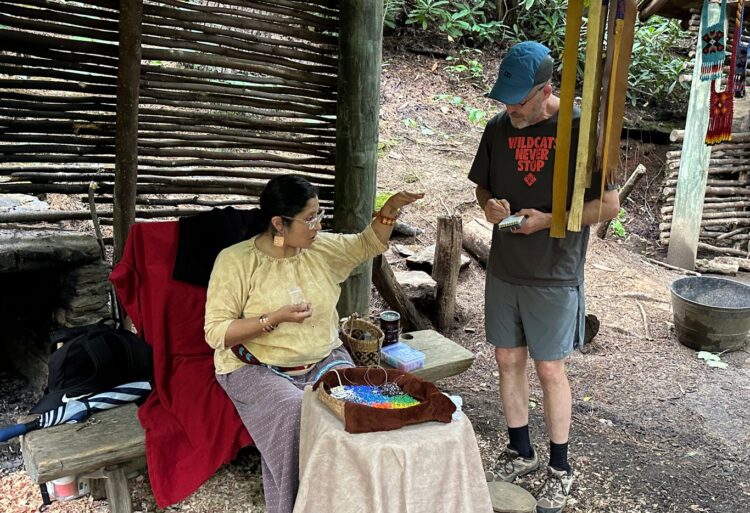
By early evening, we finally arrived to the yurts and they are LOVELY!!!!!!!!! Now it’s time to dry everything (again)!

